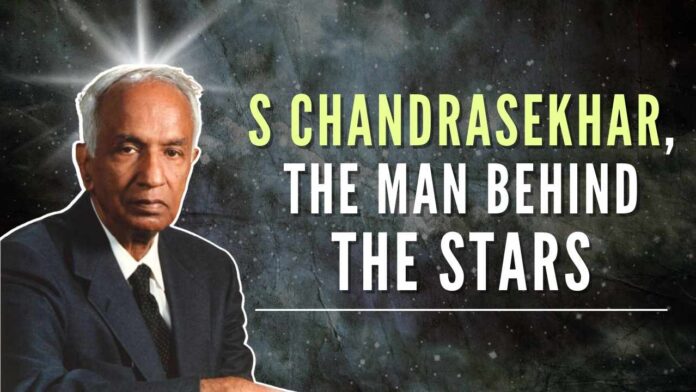
Remembering Subrahmanyan Chandrasekhar, the man who reshaped astrophysics in the 20th century
Subrahmanyan Chandrasekhar was born in Lahore then British India. With a hereditary inquisitiveness and research, he completed his schooling in Chennai. He graduated from the Presidency College, Madras with a Bachelor (Hon.) degree in Physics during the emergence of the Indian freedom struggle.
As soon as he graduated, he was awarded a scholarship from the Government of India for graduate studies in Cambridge, England. On the advice of Professor P A Dirac, he studied in Copenhagen. He was highly inspired by his uncle Sir C V Raman.
Chandrasekhar’s research interest was in stars. His research started with the study of the structure of stars, then to white dwarfs. White dwarfs are one of the last stages of a star. After white dwarfs, his research was in stellar dynamics. With the knowledge of the general theory of relativity and relativistic astrophysics, he started his work on black holes and the death of a star.
During the death of a star, the star can either become a white dwarf or a black hole based on its mass. The massive stars are more likely to enter the stage of a black hole where the star is highly denser and attracts everything in the universe. Inside a black hole, there is enormous energy and gravity, even light cannot escape. During his work on these massive stars, he discovered a limit to the scientific community called the Chandrasekhar limit, after which the stars were destined to collapse into nothingness and become black holes. The discovery of a limit that turns a star into a void was by an Indian Scientist even before independence.
Chandrasekhar was awarded the Nobel in 1983 for his theoretical studies on the structure and evolution of the stars. He thought longer and deeper about our universe than anyone since Einstein.
In honor of Chandrasekhar, NASA named its flagship mission for X-ray astronomy Chandra X-ray Observatory. Chandra means moon and luminous. Since July 1999, this Chandra X-ray observatory detects very hot regions of the universe such as exploded stars, clusters of galaxies, and matter around black holes. The observatory has continued its observation by tracing dark matter, center of the Milky Way galaxy, and other black holes in the vast universe.
Though the man behind the scientific understanding of stars has left us, Chandra completing 20 years of excellent research will continue to ponder the inquisitiveness of stars.
Note:
1. Text in Blue points to additional data on the topic.
2. The views expressed here are those of the author and do not necessarily represent or reflect the views of PGurus.
PGurus is now on Telegram. Click here to join our channel and stay updated with all the latest news and views
For all the latest updates, download PGurus App.
- S Chandrasekhar, the man behind the stars - October 19, 2022








